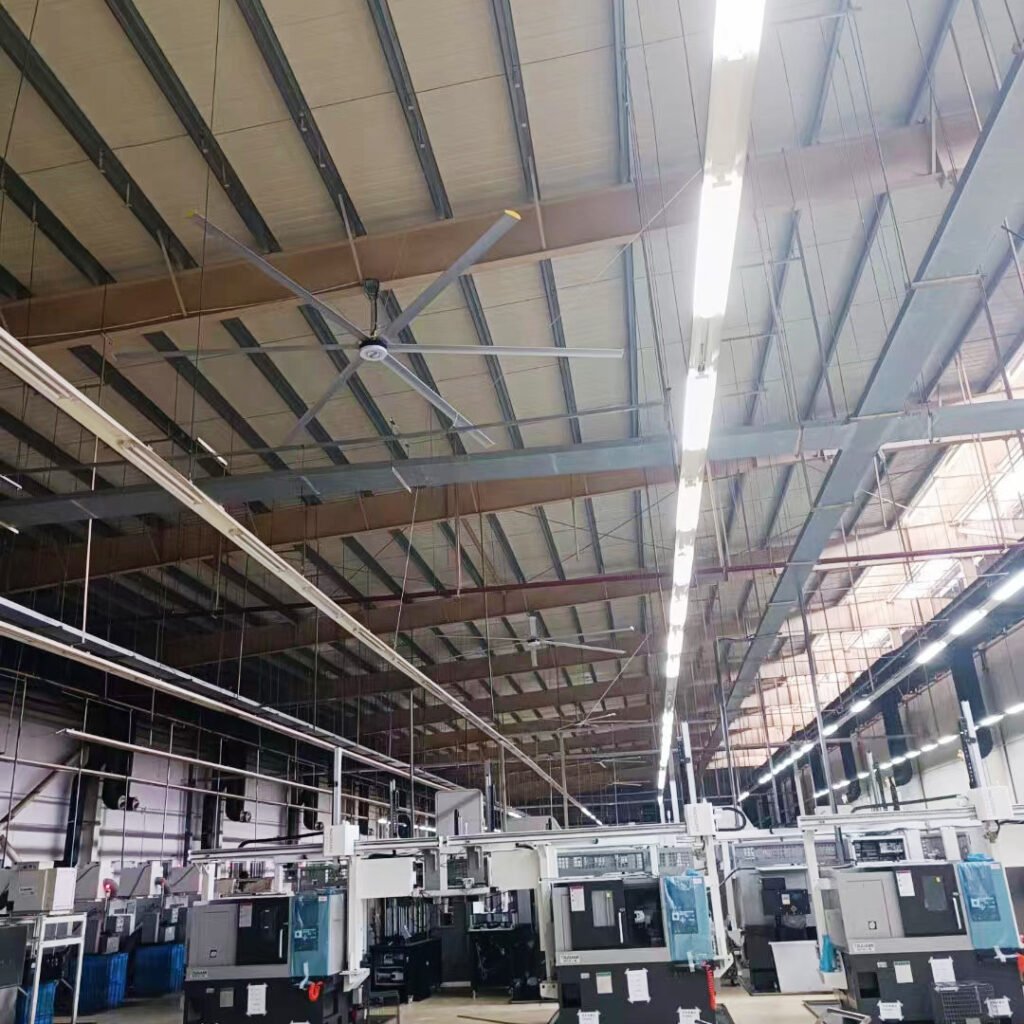
In machining centers, the use of HVLS (High Volume, Low Speed) fans is an effective method to improve the quality of the working environment and increase production efficiency. HVLS fans are particularly suitable for large open spaces, as they generate a substantial airflow at low speeds, helping to improve air quality, reduce temperatures, enhance comfort, and minimize the accumulation of dust and pollutants. Here are some advantages and considerations for using HVLS fans in machining centers:
Advantages
- Improved Air Quality: HVLS fans help maintain air quality within machining centers by circulating large volumes of air. This reduces the buildup of harmful gases and dust, providing a healthier working environment for workers.
- Temperature Reduction: Machinery in the machining process can generate significant heat. HVLS fans help disperse this heat by providing a continuous flow of air, reducing temperatures in the working areas and enhancing worker comfort and productivity.
- Energy Efficiency: Compared to traditional air conditioning systems, HVLS fans typically have lower energy consumption. They can provide comfort without sacrificing energy efficiency, thereby reducing operating costs.
- Reduced Dust Accumulation: Dust and debris in machining centers can damage mechanical equipment. HVLS fans help reduce the buildup of these particles on equipment surfaces through continuous airflow circulation, thus reducing the amount of cleaning and maintenance required.
Considerations
- Fan Size and Placement: Choosing the right fan size and installation location is crucial. The fan should be large enough to cover the entire machining area, and the installation location should maximize the coverage and efficiency of the airflow.
- Noise Levels: While HVLS fans are generally quieter than other types of fans, their noise levels still need to be considered. In machining centers where precision work is required, noise can be distracting and interfere with concentration and communication.
- Safety: The installation and operation of HVLS fans must comply with safety standards to prevent any potential safety risks. For example, the fan’s protective guard should be robust enough to prevent any objects or personnel from entering the rotating blade area.
- Maintenance and Cleaning: HVLS fans require regular maintenance and cleaning to maintain optimal performance. In machining centers, this may mean regularly removing metal shavings and other particles from the fan blades.
- Control Systems: Consider installing a programmable control system to adjust the fan speed and operation time according to the specific needs of the machining center.
HVLS fans provide an effective ventilation and cooling solution for machining centers, helping to improve the working environment and increase production efficiency. When selecting and installing HVLS fans, it is important to consider the advantages and factors mentioned above to ensure the choice of the most suitable fan system for the needs of the machining center.
